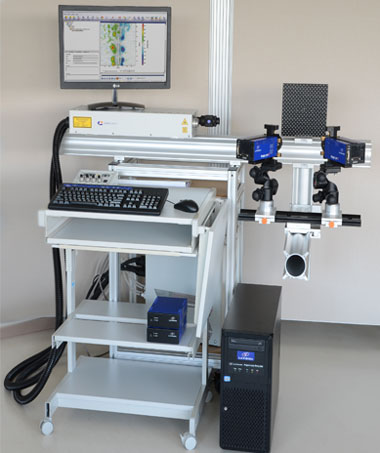I am interested in this product
Close Form

The Lavision Flowmaster System Family evaluates three dimensional velocity vector fields from scattered light patterns of particles or droplets seeded into the flow (liquid or gas).
I am interested in this product
Close Form
Detailed Specs
Techniques like Particle Image Velocimetry (PIV) and Particle Tracking Velocimetry (PTV) are supported. LaVision’s FlowMaster PIV cameras can record two successive within min. time <100 ns for ultrafast cross-correlation and speeds up to Mach 4.
- The PIV cameras offer highest sensitivity and allow the use of very small particles (or droplets).
- An image field of up to 29 million pixels combined with up to 16 bit dynamic range gives an unsurpassed spatial resolution.
- Programmable precise timing sequences in combination with flexible and speedy software evaluation complete the package.
- Standard 2D-PIV (2D2C) measures two velocity components in a plane using a single CCD or sCMOS camera.
- Stereo-PIV (2D3C) measures three velocity components in a plane using two cameras.
- FlowMaster PIV systems can be used for 2D and stereoscopic flow field analysis.
- FlowMaster 2D (2D2C) measure two velocity components in a plane with one camera.
- FlowMaster Stereo-PIV (2D3C) is a straight forward extension of the FlowMaster 2D concept and enables the measurement of all three velocity components inside a light sheet using two cameras.
- Stereoscopic PIV is based on the principle of stereoscopic imaging that is well known from the human eyesight.
- Two cameras are image the illuminated flow particles from different angles.
- Scheimpflug lens arrangements keep the planes in focus.
- The combination of both camera projections allows the reconstruction of the “real” particle displacement inside the measurement area and evaluation of all three velocity components.
- LaVision has developed new algorithms for an easier and quick calibration technique. The achieved self-calibration method is a unique tool to correct even large misalignments between calibration plate and laser light sheet. LaVision’s self-calibration method is a standard feature of the Stereo-PIV software in DaVis.


